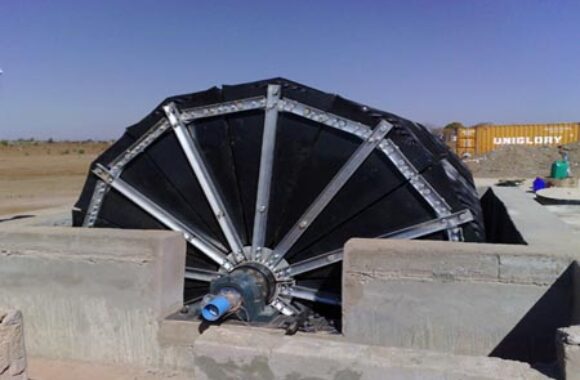Rotating Biological Contactor (RBC)
Rotating Biological Contactor (RBC)
Rotating Biological Contactor (RBC)
Rotating biological contactors (RBC) are a conventional aerobic biological wastewater treatment unit. Conventional biological treatment means activated sludge systems and fixed film systems such as trickling filters, or RBC. The advantage of all these systems is that they are compact (i.e. in densely populated urban settings) and that they efficiently reduce organic matter. However, they are high-tech and generally require skilled staff for construction as well as for operation. RBC can treat domestic black- or greywater and any other low- or high-strength biodegradable wastewater (e.g. industrial wastewater from food processors or paper mills). They have been found to be particularly effective for decentralized applications (on the level of a small to medium community or industry/institution), where electricity and skilled staff are available. The advantages of this method compared to conventional activated sludge (CAS) can be mentioned as follows.
:Applicability
- RBCs can achieve a high removal of biodegradable organic pollutants form domestic black- or greywater as well as from high-strength industrial wastewater (e.g. from dairies, bakeries, food processors, pulp, paper mills).
- A great variety of applications are known, either as post-treatment for activated sludge processes in conventional domestic wastewater treatment plants, or for decentralized application at the level of small to medium-sized communities, industries or institutions.
- They are adapted for urban areas mostly: land requirements are low, but continuous and consequent energy supply as well as semi-skilled labor are indispensable.
- Some of the material may be locally available, however, the system can only be planned and implemented by experts.
:Advantages
- High contact time and high effluent quality (both BOD and nutrients)
- High process stability, resistant to shock hydraulic or organic loading
- Short contact periods are required because of the large active surface
- Low space requirement
- Well drainable excess sludge collected in clarifier
- Process is relatively silent compared to dosing pumps for aeration
- No risk of channeling
- Low sludge production

